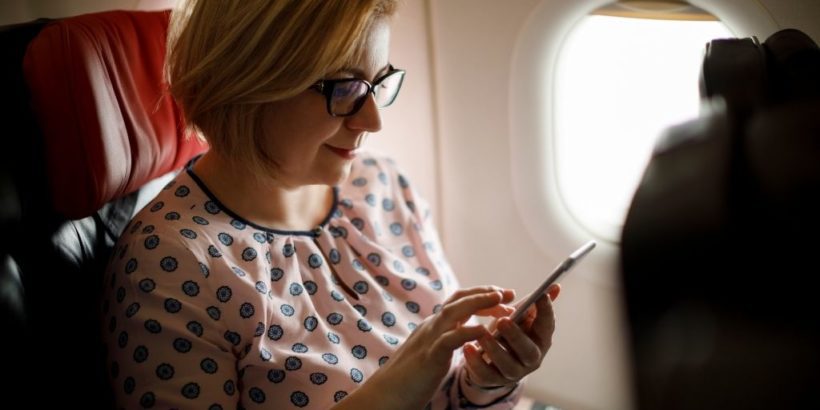Did you know that it is possible to make a phone call from 30,000+ feet up in the sky? I know this is the case because I recently attended a conference call while on a plane.
Placing a phone call from the plane can be tricky though because you have certain legal obstacles to avoid and also airline policies to consider.
In this article, I’ll break down how exactly it works and I’ll give you some helpful tips on how to make a phone call on your next plane ride.
Table of Contents
Can you make a phone call from a plane?
Yes, it is possible to make a phone call from a plane via Wi-Fi but you need to consider that some airlines prohibit voice calls and such calls can be annoying to other passengers. If you’d like to make a phone call from a plane, keep reading below to find out how.
Tip: Use the free app WalletFlo to help you travel the world for free by finding the best travel credit cards and promotions!
Is it okay to make a call on a plane?
Just because you can technically make a phone call from a plane does not mean that you should. Here are a few things to consider.
The law
According to 47 CFR § 22.925, the FCC does not allow you to operate a cell phone while airborne.
Cellular telephones installed in or carried aboard airplanes, balloons or any other type of aircraft must not be operated while such aircraft are airborne (not touching the ground). When any aircraft leaves the ground, all cellular telephones on board that aircraft must be turned off.
This makes it sound like your cell phone would have to be completely powered off but further guidance from the FAA makes it clear that when in the air, “airplane mode” is an acceptable option for your personal electronic device (PED) aka cell phone.
While airborne, operators should instruct passengers to turn off cellular telephones, disable a PED’s cellular transmitting functions, or place PEDs in airplane mode that have cellular or mobile telephony capabilities
So it’s super important to remember: by law you can’t use your phone to make a call via cellular data when flying on a plane because your cell phone can only remain in airplane mode (which disables cellular data).
Why exactly do you have to put your phone in airplane mode?
This is required for two reasons.
- Signals from your cell phone could interfere with flight communication equipment (there is very mixed opinions on this)
- The cell signals from hundreds of passengers could disrupt service on cell phone towers down on the ground
Having your phone in airplane mode means you can’t use cellular data but you CAN still utilize Wi-Fi.
As explained below, Wi-Fi is all that you may need to make a phone call from a plane but there are still some additional considerations to think about before doing so.
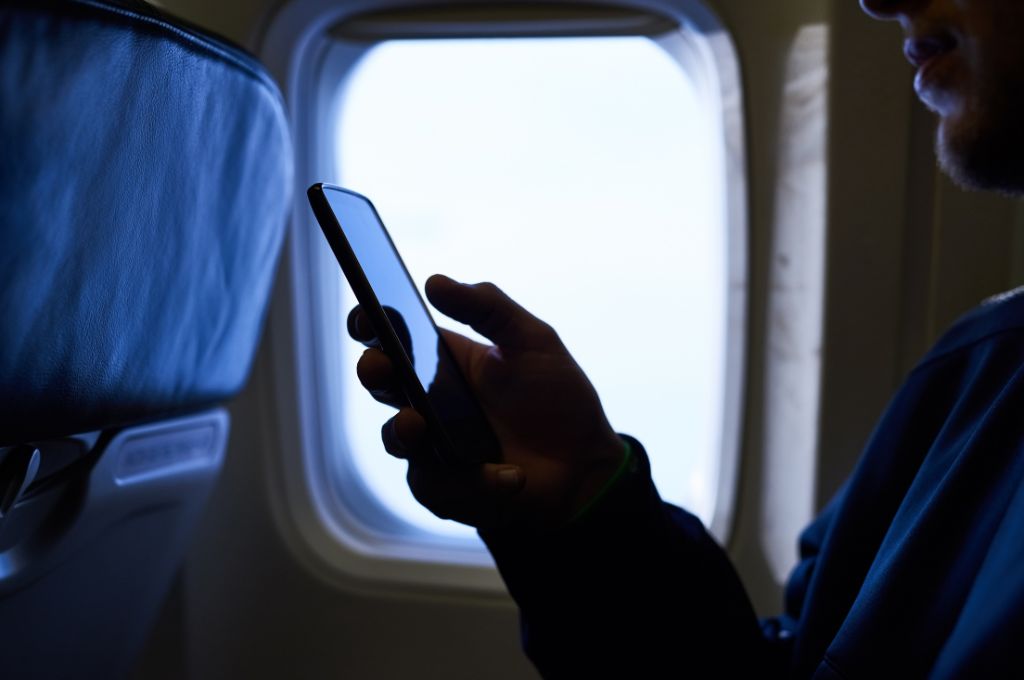
Airline policies
In the US it’s likely that the airline you’re flying on has a policy that prohibits you from making a voice phone call.
For example, back in 2013 Delta made it clear that they do not want passengers making phone calls. United Airlines and American Airlines are also on record stating they don’t allow voice calls, along with JetBlue.
But note: some airlines like JSX may allow you to make these calls in the future.
One of the biggest reasons why you typically would not want to make a phone call is because it could annoy other passengers.
Unfortunately, there are a lot of people out there who don’t realize how loud they are on the phone or simply don’t care how loud they are.
There is nothing worse than being stuck by someone who is just going on and on during a phone call with no regard for the annoyance he or she is causing other passengers.
If you are able to talk quietly or whisper, this might not be an issue but it is not an easy task for a lot of people.
And once again, if the airline outlaws phone calls it doesn’t matter how quiet your phone voice is, you’d be violating their policy by talking on the phone.
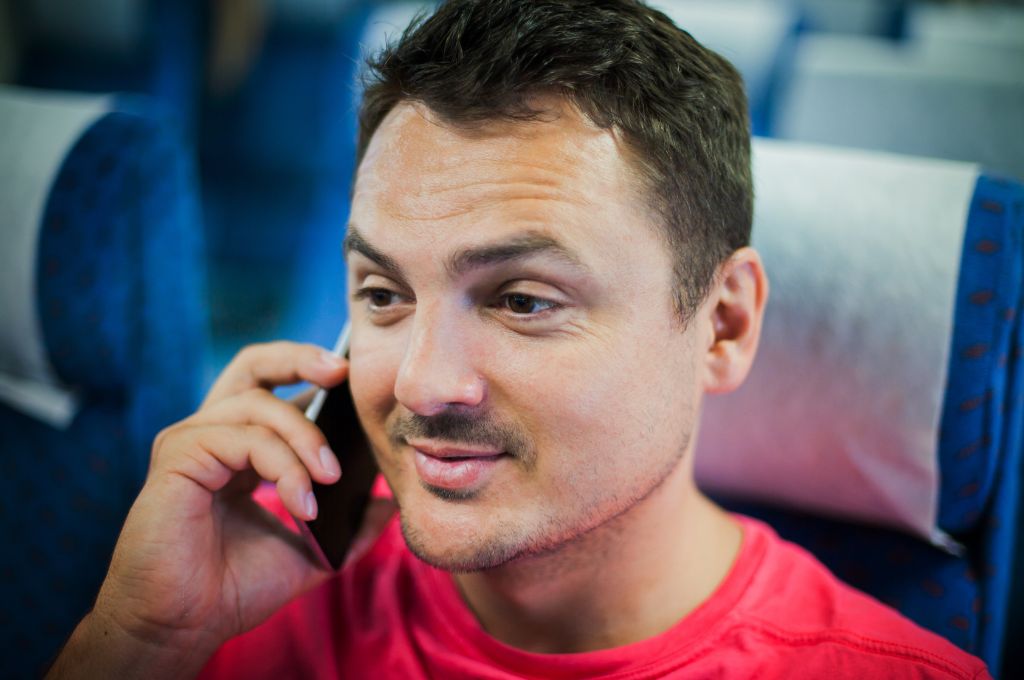
The future of phone calls
The FCC has thought about allowing passengers to make phone calls above 10,000 feet in the past but that hasn’t gained traction.
Considering how instances of unruly passengers have increased dramatically since the outbreak of coronavirus, I doubt airlines are going to be more open to introducing things that could lead to even more confrontations and Royal Rumbles.
So while the FCC has had discussions about whether or not to allow passengers to make calls on planes, I don’t think it’s going to happen anytime soon.
Conference calls
If you simply need to attend a conference call via a wifi phone call that may not be an issue for an airline.
That’s because airlines are primarily concerned about passengers getting annoyed by you talking on the phone. But if you were simply listening in on a phone call, you’re not presenting any disturbances to other passengers.
If you have enabled text messaging you can always sit in on a call and simply text someone at the meeting in order to silently communicate from the cabin which is something that I have also done before.
Sure, it’s not the most ideal way to participate in a meeting but at least you will be able to be a part of the meeting (yippee, I know).
Related: Can You Text On A Plane? (Wifi vs Cell Phone Data)
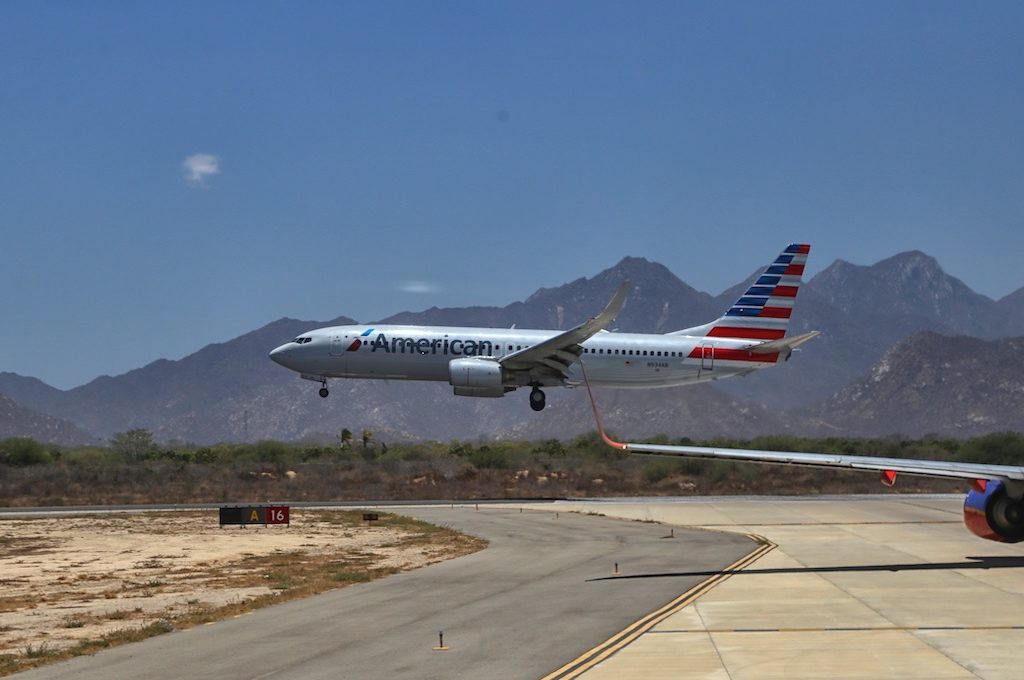
How to make a phone call from a plane
The first thing you need to do is connect to the plane’s Wi-Fi.
Some airlines allow you to connect to the Wi-Fi in order to send out text messages and other types of messages for free but if you plan on making a phone call, you probably will have to pay for the Wi-Fi session.
After you are connected to the Wi-Fi, you need to activate Wi-Fi calling on your phone if you haven’t already. This can be done from your settings on your phone in just a couple of seconds.
On an iPhone, go to Settings -> Cellular -> Wi-Fi Calling. Next toggle the button for “Wi-Fi calling on this iPhone.”
There are additional settings for things like roaming but you do not need to toggle these on in order to make a phone call from the aircraft.
Depending on your service provider and mobile device you may have to deal with a couple of pop-up screens to turn Wi-Fi calling on.
But once you do that, your phone should be capable of making a phone call from the plane.
Nowadays you don’t have to do anything extra to add Wi-Fi calling to your cell phone services — it is probably already there.
When you make a call over Wi-Fi with your cell phone company, you should be billed the same way but you may want to check with your phone company first.
You can also potentially make phone calls from apps such as WhatsApp that allow you to send calls over Wi-Fi. And of course there are other options like FaceTime.
Note: Some airlines may not have quality Wi-Fi which means that you will be able to connect to the Wi-Fi and maybe complete a call but you will struggle to have a quality, non-disrupted conversation.
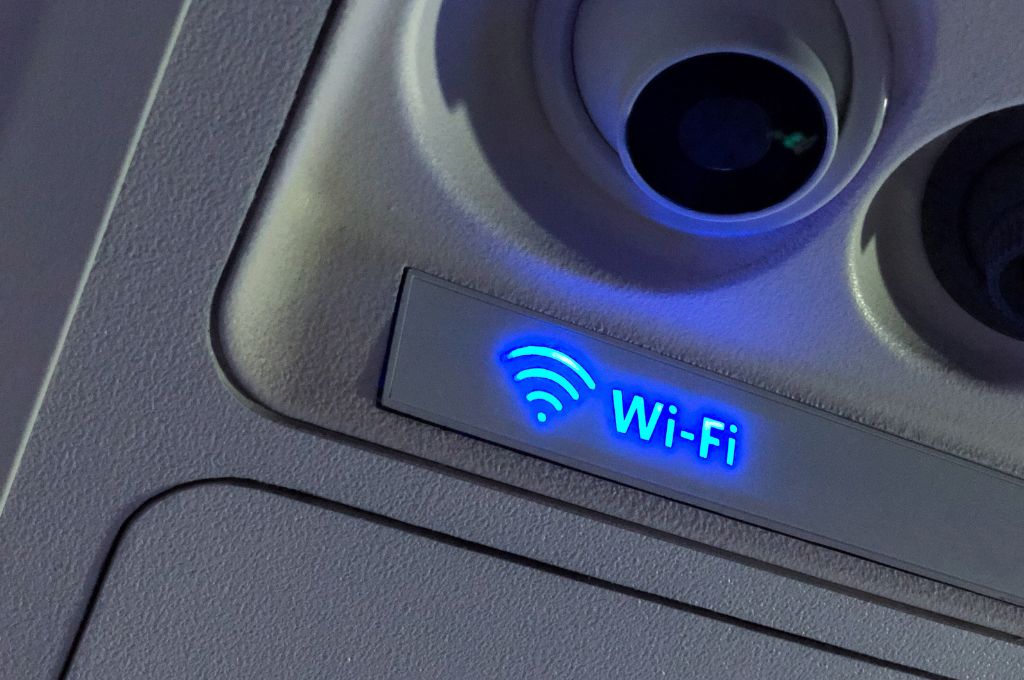
Air-to-ground telephones
There’s also something called “air to ground” telephones.
You may have heard of Airfone or Air One which were more common to find on planes in the 80s, 90s, and early 2000s. Each block of three economy seats would have one phone while first class seats would have an individual phone per seat back.
These services allowed passengers to make calls from the plane when at cruising altitude at expensive rates such as $4.99 per minute. In fact, during the 9/11 attacks this is how a lot of the phone calls were made, including on United Airlines Flight 93.
The services eventually proved to have limited popularity with only a couple of passengers per flight using it.
In 2002, Air One was discontinued and after a series of auctions and acquisitions Airfone essentially no longer existed as of 2013.
Today, you will likely be hard-pressed to find an aircraft with an air to ground telephone available to passengers. So your best bet for completing a phone call will probably be via Wi-Fi.
Final word
While you cannot use cellular data to make a phone call while in a plane, it’s often possible to make a phone call from an airplane via Wi-Fi. But you need to be aware that some airlines prohibit these calls and a lot of passengers can find it extremely annoying when someone is chatting on the phone.
Daniel Gillaspia is the Founder of UponArriving.com and the credit card app, WalletFlo. He is a former attorney turned travel expert covering destinations along with TSA, airline, and hotel policies. Since 2014, his content has been featured in publications such as National Geographic, Smithsonian Magazine, and CNBC. Read my bio.

